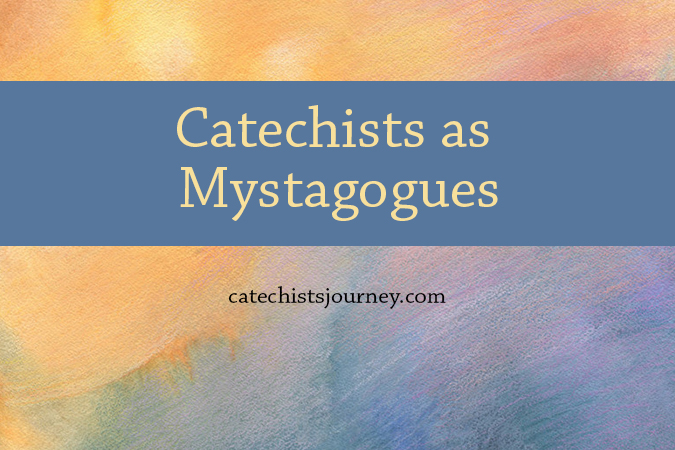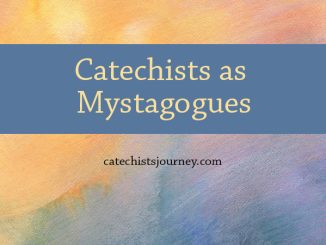
A mystagogue is someone who not only teaches, but also leads and accompanies others into mystery (Directory for Catechesis 113). The mystagogue recognizes that our biblical understanding of mystery is not as something to be solved but as something to enter into, and as something that is revealed and yet remains hidden.
One of the first ways that we as catechists do this is by helping those we teach to recognize unhealthy life paths or narratives that diminish and destroy rather than give life. As I stated in my book, Preparing Hearts and Minds, before we proclaim the Good News, we need to help those we teach to recognize that they are truly in need of this life-giving message. We do that by helping them to get in touch with their incompleteness, emptiness, or brokenness. We need to convince people that we humans are prone to dysfunctional behavior and cannot save ourselves from such dysfunctions. We need an intervention that sets us on the road to recovery.
Too many of us are walking around with narratives that are unhealthy, unfulfilling, and, dare I say, dangerous to our own wellbeing and that of others. Some of these narratives tell us that we are worthless, ugly, fat, unreliable, unlovable, shameful, inferior, untalented, uninteresting, undeserving, or incapable of happiness. Still other narratives tell us that, in order to be happy, we need money, power, possessions, success, pleasure, control, popularity, conquest, prestige, or fame. It’s no wonder that people are drawn to various spiritual paths—often Eastern religions or “New Age” spiritualities—in an attempt to find a healthy narrative.
The mystagogical catechist presents Catholicism, not simply as a set of beliefs or doctrines, but as a spiritual path. The role of the mystagogical catechist is comparable to the role of a “guru,” in the sense of someone who is capable of shining a light in the darkness. A guru is someone who draws on his or her experience and spiritual tradition to help others move forward on a path to fullness of life. This is what a mystagogue does. We accompany others on their journey and shed light on the path in order to expose obstacles and reveal truth. This is why the early Church was referred to as “the Way.” Faith in Jesus Christ was—and must be seen today—as a spiritual path to fullness of life.
When we catechists see ourselves as mystagogues, we recognize that our goal is not, first and foremost, “the delivery of a doctrine; but rather, making present and announcing Jesus Christ [and our] ultimate aim [as] the fulfillment of human life.” (DC 29–30) Human life cannot be fulfilled when it is diminished and destroyed by unhealthy life narratives. This explains our Catholic practice of an examination of conscience and our Tradition’s emphasis on avoiding the seven deadly sins. In years past, these realities were addressed by preaching “fire and brimstone.” The mystagogue, however, does not go around pointing fingers at people and telling them how sinful they are. Instead, the mystagogue helps others to recognize the presence of sin and its effects on us. If we are to proclaim Jesus Christ as the Savior of the world, we need to help others recognize their need to be saved and from what we need to be saved!
In practical terms, the mystagogical catechist accomplishes this by engaging learners at the outset of a session with a problem—an example of the incompleteness, emptiness, or brokenness of life as a way to grab their attention and help them recognize the need for healing, repentance, conversion, and growth. I sometimes think of this as the “Houston, we have a problem” approach to a session, because the remainder of the session, as in the movie Apollo 13, is dedicated to finding a way to avoid destruction and be saved. By identifying a problem from the get-go, we create a teachable moment, which allows us to present the Good News of Jesus as the pathway to fulfillment of life!





Thank you so much for the above article. It was very insightful and I plan to use it in my class. Again thank you for all you do.
God bless
You’re very welcome, Maxine! Glad you are finding it useful/helpful!